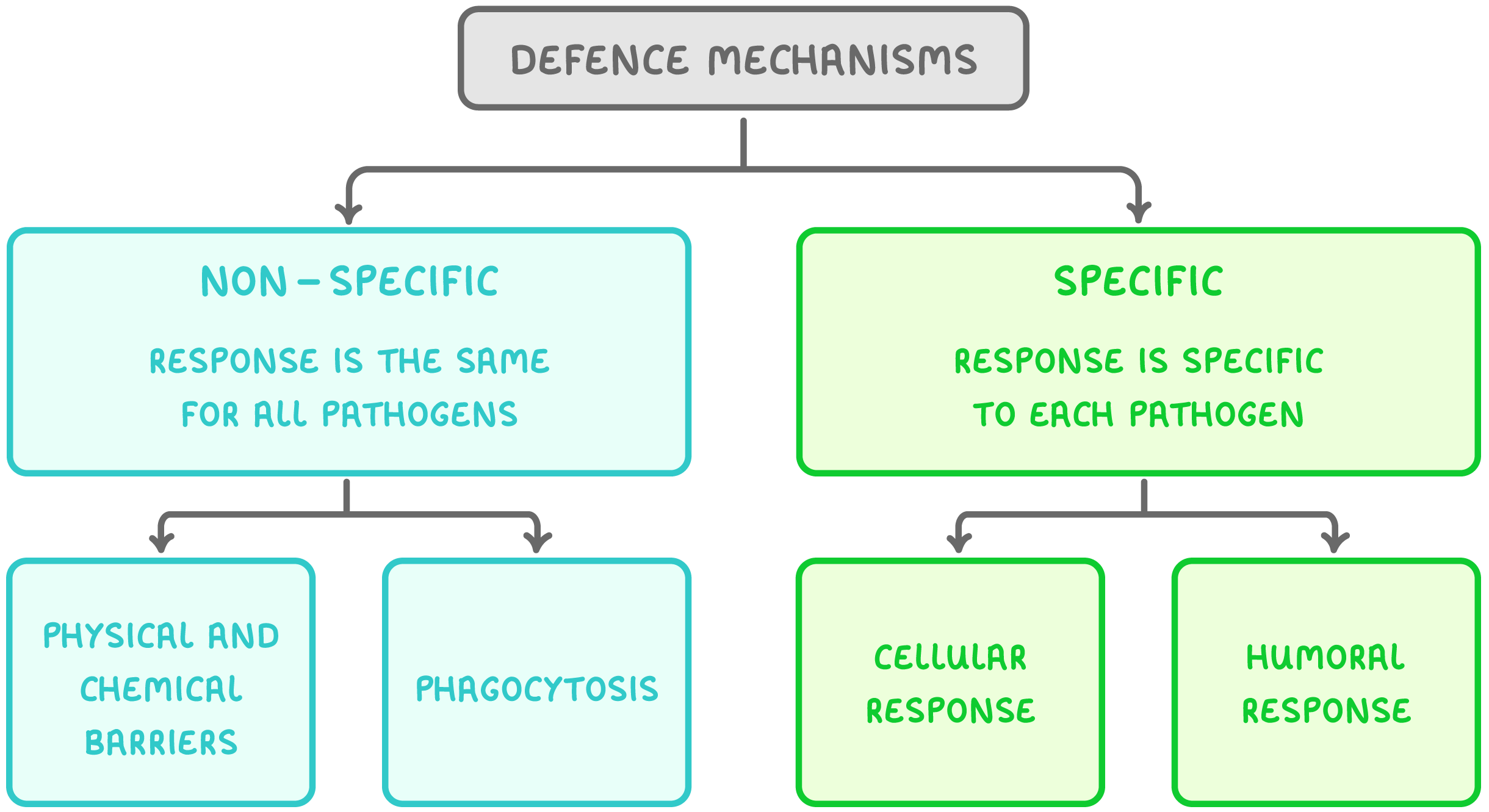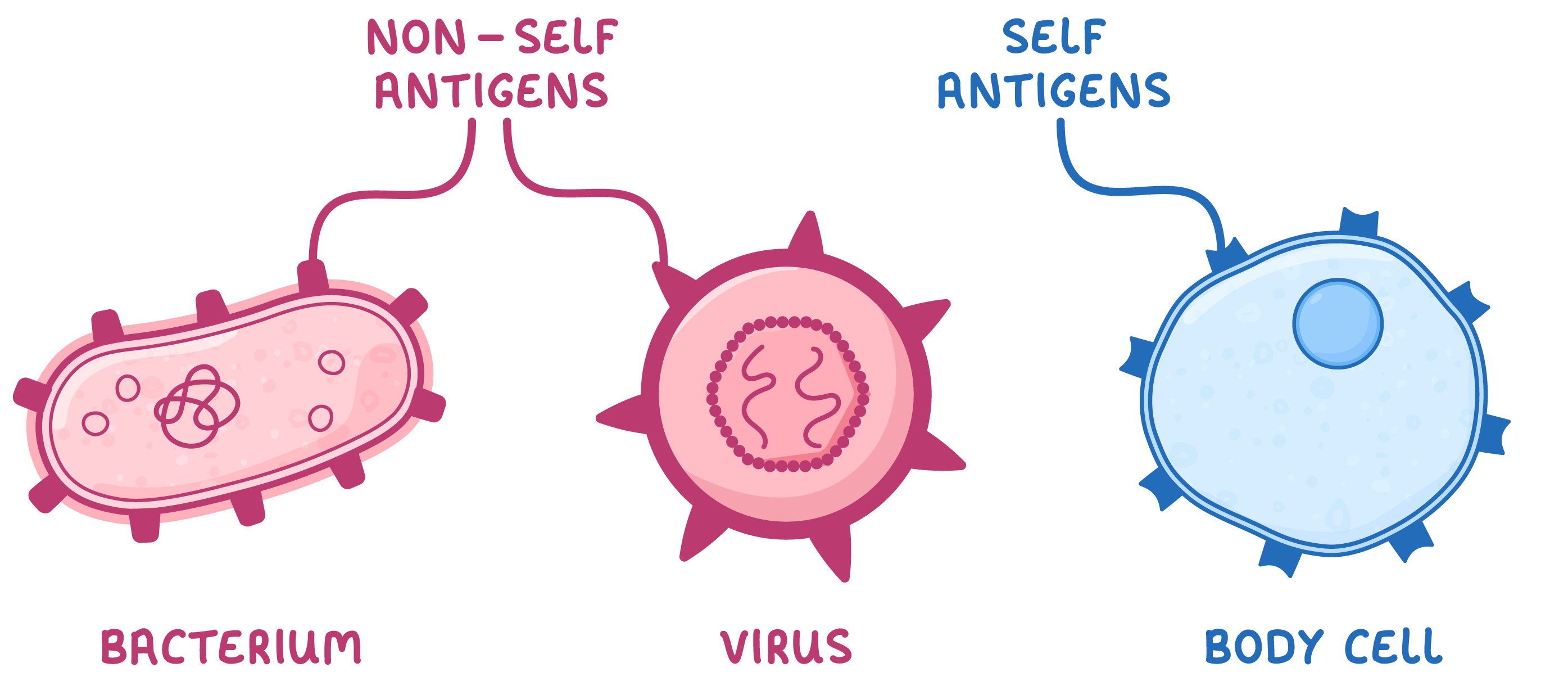Defence Against Disease: Barriers to Pathogens
This lesson covers:
- The difference between non-specific and specific defence mechanisms
- The physical and chemical barriers to pathogens
- What antigens are
Non-specific and specific defence mechanisms The body has a number of defence mechanisms to protect itself from pathogens.  |
These defence mechanisms can be split into two groups:
|
Physical and chemical barriers The body has a number of non-specific barriers to prevent the entry of pathogens. Skin:
Mucous membranes:
Expulsive reflexes:
Blood clotting and wound repair:
|
Inflammation Inflammation consists of swelling, heat, redness, and pain at the site of infections or wounds. It can be triggered by damaged tissues which release chemicals affecting blood vessels in two ways:
|
Antigens Antigens are unique molecules (usually proteins) found on the surface of cells.  |
These antigens allow the immune system to distinguish between the body's own cells (self) and foreign cells (non-self). Any foreign cells can then be destroyed whilst leaving the body's own cells unaffected. Antigens allow the immune system to identify various cells and molecules:
|